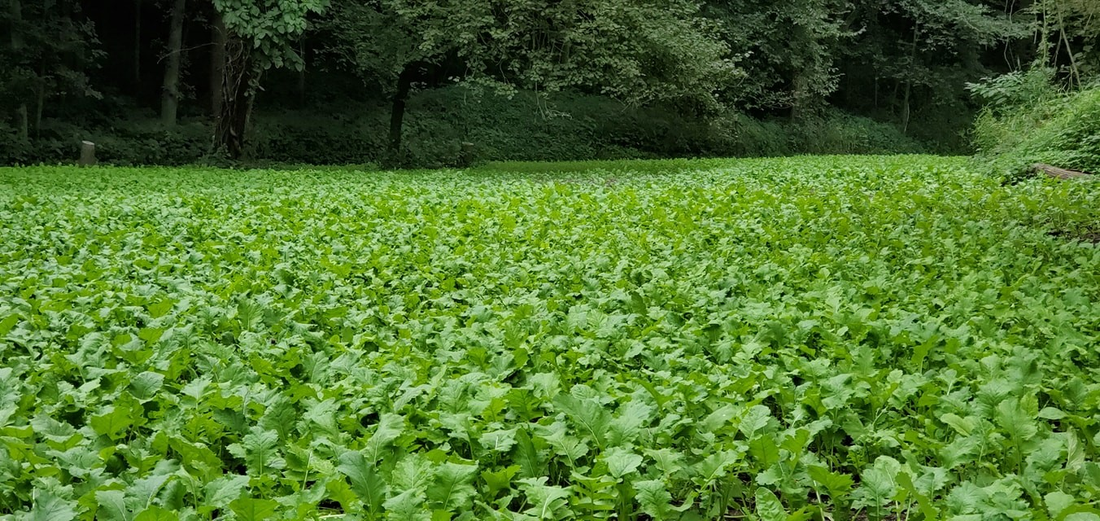Food plots are beneficial for both herd and land management. Planting appropriate food plots can help your herd with everything from post-rut recovery to promoting antler growth while providing a year-round food source. Not sure where to begin? Follow these five easy steps and you’ll be on your way.
Step One: Pick Your Spot
Try to stay away from areas with little to no existing vegetation. Although it may be easier to clear and prep, chances are if it doesn’t sustain weeds, it won’t sustain your food plot. The shape and size can vary depending on the available land. Are there nearby trees to support a stand? Is there adequate sunlight? Is the area easily accessible for you and the deer? If you answered yes, then you’ve found your spot!
Step Two: Test the Soil
Testing your soil is essential to any successful food plot. Testing options include a digital pH meter that’s inserted into your soil to read moisture and acid levels or a more in-depth analysis can be purchased with our Soil Test Kit. Your soil sample is tested by a laboratory to provide accurate results allowing you know the exact amounts of fertilizer and lime to add to your plots. Lime is used to adjust the acidity in the soil. An ideal pH soil result is 7 for your food plots. Follow up with fertilizer as needed after you prep your plot.
Step Three: Prep Your Spot
Remove existing vegetation. First, take a chainsaw to any saplings or trees. Next, spray an herbicide, like Roundup, to kill off the plants, grasses, and weeds. Finally, once most of the vegetation has died off, set a controlled fire to burn off the rest of it.
Now for the dirt. If the area is relatively small, you can turn the dirt with a rake and some hard work. For larger areas, an ATV or tractor with a tiller may be necessary. Lastly, hook up a Packer Maxx Cultipacker to your ATV to pack the dirt which ensures good contact between your seed and soil. Remember that lime and fertilizer we talked about earlier? Now is the time to apply it.
Step Four: Time to Plant
What you plant depends on preference and climate. If you decide on a stand-alone seed, try POA Select Seeds Alpha-Male or Pure Chicory. Looking for a tried and true perennial, Clover Insanity or Field of Greens are great choices. If you like to change your plots every year and are looking for the perfect annual mix, then Brassica Beatdown and Trifecta are the solutions for you. If you want to mix things up a bit, try one of our Signature Blends, Smorgasbord or Sunflower Showdown.
Once you choose the seeds you want to plant, it’s time to get them in the ground. If you’re lucky enough to be able to drill your seed, planting is quick and easy. If not, grab your bag seed spreader, fill it up, and start walking. Broadcast seeding takes a bit more time and effort, but it still gets the job done.
Step Five: Maintain Your Plot
It doesn’t matter how well you’ve prepped your spot; weeds are inevitable. To combat the weeds before they suffocate your plot, be sure to spray them with a broad leaf herbicide. For perennial plots, like clover, mowing is essential. After reaching a height of about eight inches, clover isn’t as palatable to your deer herd and loses some of its nutritional value. Mowing your plot to keep it below this height will keep it healthy and help suppress the weeds. A second round of fertilizer in the fall would also keep it going strong through hunting season.

